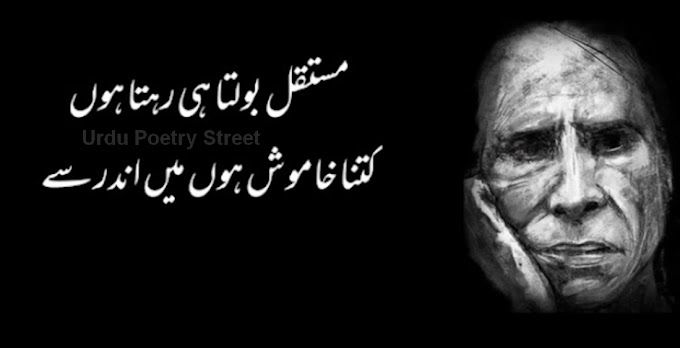Na Hath Thaam Saky Na Pa Saky Daman
Bohut Qareeb Se Uth Kar Bichhar Kia Koi
نہ ہاتھ تھام سکے نہ پا سکے دامن
بہت قریب سے اٹھ کر بچھڑ گیا کوئی
This couplet encapsulates the poignant sentiment of being unable to hold onto or grasp something dear, despite its proximity, and the inevitable separation that follows. Let's delve into the interpretation of each part
1. "Na Hath Thaam Saky Na Pa Saky Daman" - "Unable to hold onto the hand, nor grasp the hem."
Here, the speaker describes their inability to hold onto ("Na Hath Thaam Saky") or grasp ("Na Pa Saky Daman") what they desire or cherish. The metaphorical imagery of holding onto a hand or grasping a hem conveys the idea of trying to retain or secure something precious, but failing to do so. This suggests a sense of frustration or helplessness in the face of losing something dear to them.
2. "Bohut Qareeb Se Uth Kar Bichhar Kia Koi" - "After being so close, did someone separate from afar?"
In this line, the speaker reflects on the irony of being separated from someone or something despite being very close ("Bohut Qareeb Se"). The phrase "Uth Kar Bichhar Kia Koi" evokes the image of being lifted or separated ("Uth Kar Bichhar Kia") from a close proximity, suggesting a sudden and unexpected departure. This conveys a sense of lamentation or disbelief at the abruptness of the separation, highlighting the emotional impact of being torn apart from something or someone cherished.
Overall, this couplet captures the universal experience of loss, longing, and the transient nature of relationships. It conveys the frustration and sorrow of being unable to hold onto what is dear, and the painful reality of separation despite closeness. Through its evocative imagery and poignant sentiment, the couplet invites reflection on the unpredictable twists and turns of life and the emotional toll of being separated from loved ones or cherished dreams.










